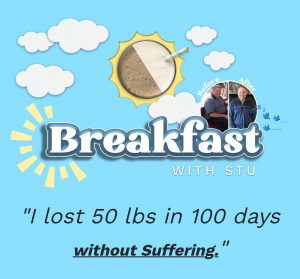Insert it to the checklist: cannabis-derived cannabinoids, such as CBD, could be excellent for bone wellness, far too. Researchers have been investigating cannabinoid receptor expression and the production of endocannabinoids and their companion enzymes in bone tissue for a couple a long time. But as with most locations of cannabinoid science it appears to be a matter of increasing interest recently, in terms of the two fundamental science and the tests of probable treatments for bone disease or damage.
In accordance to PubMed, the terms “cannabinoid” and “bone” appeared collectively in 36 papers in 2020, and 33 papers in 2021. These might not appear like big quantities till evaluating them to those for cannabis and autism, arguably a greater-profile research place. “Autism” appeared alongside “cannabinoid” in 23 scientific papers in 2020, and 38 in 2021.
Granted, these search-term comparisons provide only a obscure perspective of analysis trends for the reason that they do not account for the main written content of the papers in concern – only no matter whether or not these conditions surface anywhere in the textual content. But a flurry of specific papers in the latest months, like two reviews and 4 experimental studies, confirms that researchers all-around the entire world are continuing to probe connections between bone health and fitness and the endocannabinoid method (ECS).
Cannabinoids & bone issues
Two new articles or blog posts present a handy introduction to the subject matter by reviewing likely apps of exogenous cannabinoids – both equally synthetic and cannabis-derived – for the treatment method of bone diseases and ailments like osteoarthritis (the most typical sort of arthritis, happening when protecting cartilage at the finishes of bones wears down), osteoporosis (a situation in which bones come to be weak and brittle), and bone cancer.
The 1st, published by a workforce of Italian researchers in the Intercontinental Journal of Molecular Sciences1 final November, concludes that “pharmacological modulation of the endocannabinoid system” – specifically by artificial molecules concentrating on the CB2 receptor (a very touted but but-unproven pathway for addressing a wide wide range of illnesses via the ECS) – “could supply a feasible cure for pathological situations wherever altered [bone cell] exercise is noticed.”
The second current evaluate, released in January 2022 in the journal Frontiers in Pharmacology2 by researchers at Nanchang University in China, summarizes findings from 20 years of study into the ECS and bone conditions. In particular, it highlights preclinical scientific tests of hashish-dependent therapies in animals suggesting that plant cannabinoids can “alleviate the enhancement of osteoarthritis, stop osteoporosis, cut down cancer-induced osteolytic destruction, and make improvements to fracture healing.”

Healing bones by hashish?
Informed by proof of the role of the ECS in bone fat burning capacity, two current experiments investigated regardless of whether cannabis or CBD specifically could aid bone therapeutic following personal injury, illness, or other trauma.
In March 2022, researchers with the University of Texas Health and fitness Science Centre at San Antonio and Harvard Healthcare School/Boston Children’s Clinic revealed a paper in the Journal of Orthopaedic Trauma3 describing an strange analyze in which bone healing just after a fracture was assessed amongst cannabis-employing and non-using pediatric sufferers. The review population provided 399 individuals ages 10 to 18 who had been surgically treated for a bone fracture in between 2010 and 2020, of whom 21 were hashish buyers according to toxicology screening.
When comparing “time to union,” a evaluate of fracture therapeutic, the scientists discovered that cannabis buyers healed significantly slower than non-people: 2 times as long on typical, in point. A selection of other variables have been also collected and controlled for, but the study’s smaller sample of hashish buyers between a youth cohort represents an significant limitation.
An upcoming paper in Colloids and Surfaces B: Biointerfaces4 from researchers in China, meanwhile, implies that a CBD-infused copper hydrogel may perhaps be productive at serving to restore open bone problems. When compared to a CBD-totally free control gel, the medicated gel showed substantial anti-bacterial, anti-inflammatory, angiogenic (marketing the development of new blood vessels), and osteogenic (promoting bone progress) things to do in in vitro experiments. Copper is well known as an antimicrobial, specifically in wellbeing treatment settings, and the authors be aware that the regulate gel on its own still exhibited some organic exercise.
Concentrating on the CB2 receptor
As Task CBD has protected in the previous, selective CB2 agonists are an enticing alternative for many researchers and pharmaceutical corporations investigating cannabinoid-based mostly therapies, in part mainly because they bypass the intoxicating effects of CB1 receptor activation. But to day this kind of medications have been disappointing in the clinical context because of to unintended effects and other unwelcome outcomes resulting from CB2’s exceptionally huge attain in the human overall body.
However the CB2 pathway proceeds to perform a distinguished role in cannabinoid investigate, and the arena of bone well being is no exception. Two current scientific tests out of China supply examples.
To start with, a paper released in Molecules5 in January 2022 determined 5 “botanical” CB2 receptor agonists that showed proof in lab testing of advantageous outcomes on bone cells. The paper doesn’t specify irrespective of whether these compounds appear from cannabis, talked about when in the paper, or from kava, a plant indigenous to the South Pacific that also contains CB2 agonists and is referenced in the citations.
Then in February 2022, a paper in the Global Journal of Stem Cells6 explained an experiment in which scientists examined the results of cannabidiol (CBD) on mouse bone marrow stem cells. Guaranteed plenty of, they located that CBD, generally through a CB2-dependent pathway (while not via immediate CB2 activation), decreased swelling markers as nicely as promoted new bone mobile development.
Nate Seltenrich, an independent science journalist dependent in the San Francisco Bay Spot, addresses a vast range of subjects together with environmental health and fitness, neuroscience, and pharmacology.
Copyright, Project CBD. May perhaps not be reprinted with out permission.
Footnotes




